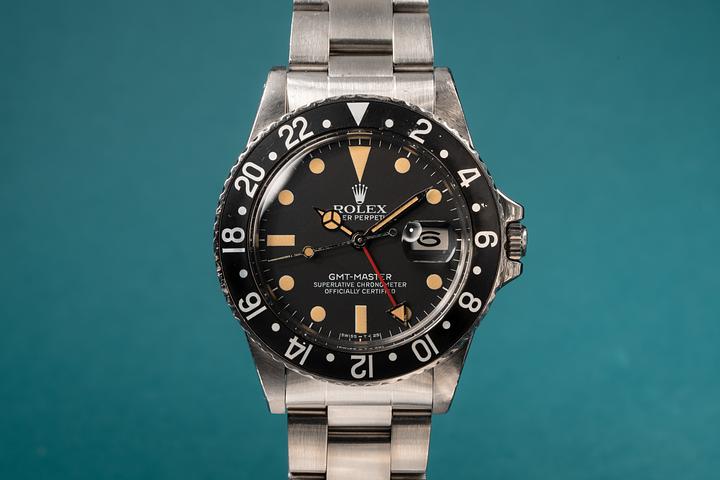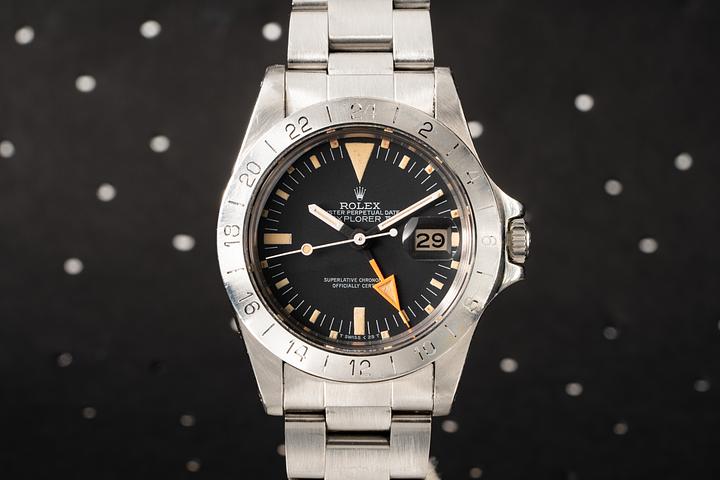Mother of Pearl Rolex Dials: Elegance in Every Iridescent Glance

The Allure of the Mother of Pearl Rolex: Timeless Elegance Meets Swiss Precision
There’s just something hypnotic about a mother of pearl Rolex dial. Maybe it's the way light skips across its iridescent surface, how each watch face is just a little different — like snowflakes — or maybe it’s that intoxicating mix of natural opulence and mechanical mastery. If you've ever caught a glimpse of a Rolex Datejust or a Daytona with a finely crafted mother of pearl dial, you likely stopped for a second. Probably more than a second. The blend of craftsmanship, rarity, and heritage is impossible to ignore. Today, we’re diving deep — and I mean, deep — into the story, science, design, and desirability of the mother of pearl Rolex within the storied framework of the Swiss watch industry. Get comfy. Or don’t. Either way, let’s get into it.
The Origins of Mother of Pearl in Horology
Long before modern horologists started shaping nacre into glossy watch faces, mother of pearl was a prized material in fine art and jewelry. Extracted from the inner lining of certain mollusk shells — such as the Pinctada maxima found in the Indian and Pacific Oceans — nacre has been admired for centuries. In fact, artisans in ancient Mesopotamia were already working with it around 2,500 BCE. Fast-forward to the dawn of Swiss watchmaking in the 16th century, and while mother of pearl wasn't immediately common, decorative dials weren’t far behind. It wasn’t until the latter half of the 20th century—sharpening into the 1980s and 1990s—that mother of pearl really entered the horological mainstream. With evolving technology enabling thinner slicing and more consistent lamination, luxury brands like Rolex began to use the material more liberally. Still, they never let it go mass—always rare, always special. Rolex’s signature mother of pearl dials elevate models like the Day-Date, Lady-Datejust, and even the Pearlmaster into pieces that are less watch and more...moment.
Why Rolex Uses Mother of Pearl
Rolex doesn't shout about it, but their use of mother of pearl is wildly intentional. Each dial is unique. There’s no dyeing, or artificial coloring involved. What you see is 100% natural nacre—delicate, yet notoriously difficult to machine. Rolex’s Geneva workshops are home to some of the most capable precision tools in the game, and they use them to razor-slice nacre into pieces sometimes thinner than a fingernail. Which is bonkers, considering how fragile it is. But why go through all this trouble? Well, here’s the thing. While it’s not as visible as an iconic bezel or dial pattern from across the room, mother of pearl pulls you in. It’s about the second, third glance. About knowing. About the layers, literally and figuratively. Rolex uses mother of pearl to signal something understated, elevated, quietly powerful. When light hits it — changing from ethereal white to flashes of green, pink, even blue — it becomes incredibly personal. Intimate, almost. It’s a material that whispers, never shouts.
The Art of Working with Nacre: Rolex’s Secret Craft
Not many people talk about how impossibly complex it is to turn a piece of mother of pearl into a watch dial. It’s organic, meaning no two pieces are structurally or visually identical. Rolex craftsmen—and yes, they use that term for a reason—must assess each slab of nacre by hand. Some get rejected instantly; too brittle, too pale, too wild. Others get cut into dials using diamond-edged tools in sterile environments where temperature and humidity are tightly regulated because nacre warps easily. Once cut, dials are polished and secured to metal baseplates—often white gold for added structural integrity. Here's another fun fact to chew on: Rolex does not produce “colored” mother of pearl dials. What looks pink or green is just...nature being dramatic. There’s no altering the tone. That’s all up to the oyster that formed it and how the light bounces around in those microscopically layered crystals. Which means that owning a mother of pearl Rolex is literally like owning a frozen piece of seaborne art. No one else's will ever be the same as yours.
Iconic Rolex Models Featuring Mother of Pearl
So where does this enchanting material show up in the Rolex catalog? Several places, actually. The most recognizable is perhaps the Lady-Datejust, often paired with diamond indices or a diamond bezel — Rolex flexing, but in a courtly sort of way. It’s elegant, restrained, but distinctly high-stakes luxury. Then there’s the slightly louder Pearlmaster, the brand’s most gem-set line, where mother of pearl dials are often matched with rainbow-colored sapphires or full pavé cases. Still, Rolex maintains an aesthetic balance that never pushes over the edge into bling for bling’s sake. For those after something more neutral, the Oyster Perpetual Day-Date line occasionally flaunts a mother of pearl dial, especially in precious metal configurations like platinum or Everose gold. These pieces toe the line between executive cool and bespoke artistry. And while you won’t see mother of pearl in the hard-wearing tool watches like the Submariner or the GMT Master II, that’s kind of what makes these rare moments special. It’s Rolex showing range.
Mother of Pearl and the Luxury Market: A Symbol of Tasteful Status
Let’s zoom out for a second. The inclusion of mother of pearl in a luxury timepiece sits at an intriguing crossroads between natural resource, artisan skill, and high-end taste culture. Within the Swiss luxury watch landscape, materials are part of the message. Yellow gold shouts legacy. Ceramic signals tech-forward durability. Nacre, by contrast, speaks elegance. It’s a subtler flex—a refinement play, not a display of excess. As global interest in fine watches spikes among younger collectors and professionals, mother of pearl feels more relevant than ever. Especially in an age of screen glare and digital sameness, the tactile, iridescent unpredictability of a mother of pearl dial offers a tactile return to uniqueness. You can’t swipe through it. Each dial holds a point of view. And Rolex, now over a century old, continues to wield that softly-glowing dial like a signature brushstroke.
Closing Thoughts: The Poetry Within the Pearl
Look, I get it. We live in a world of fast everything. Instant updates. Mass everything. But a mother of pearl Rolex? That’s a slow luxury. It’s born over years inside a shell at the bottom of the ocean, shaped by artisans whose names most of us will never know, and then worn by someone who doesn’t need to explain their taste. It’s a watch, sure. But it’s also a poem, sealed behind sapphire crystal. And maybe that’s what makes it all so quietly powerful. The mother of pearl dial isn’t loud or obvious, but it doesn’t need to be. It’s for the person who knows where beauty hides. Often, it hides in the details. And Rolex? Rolex knows exactly where to look.




